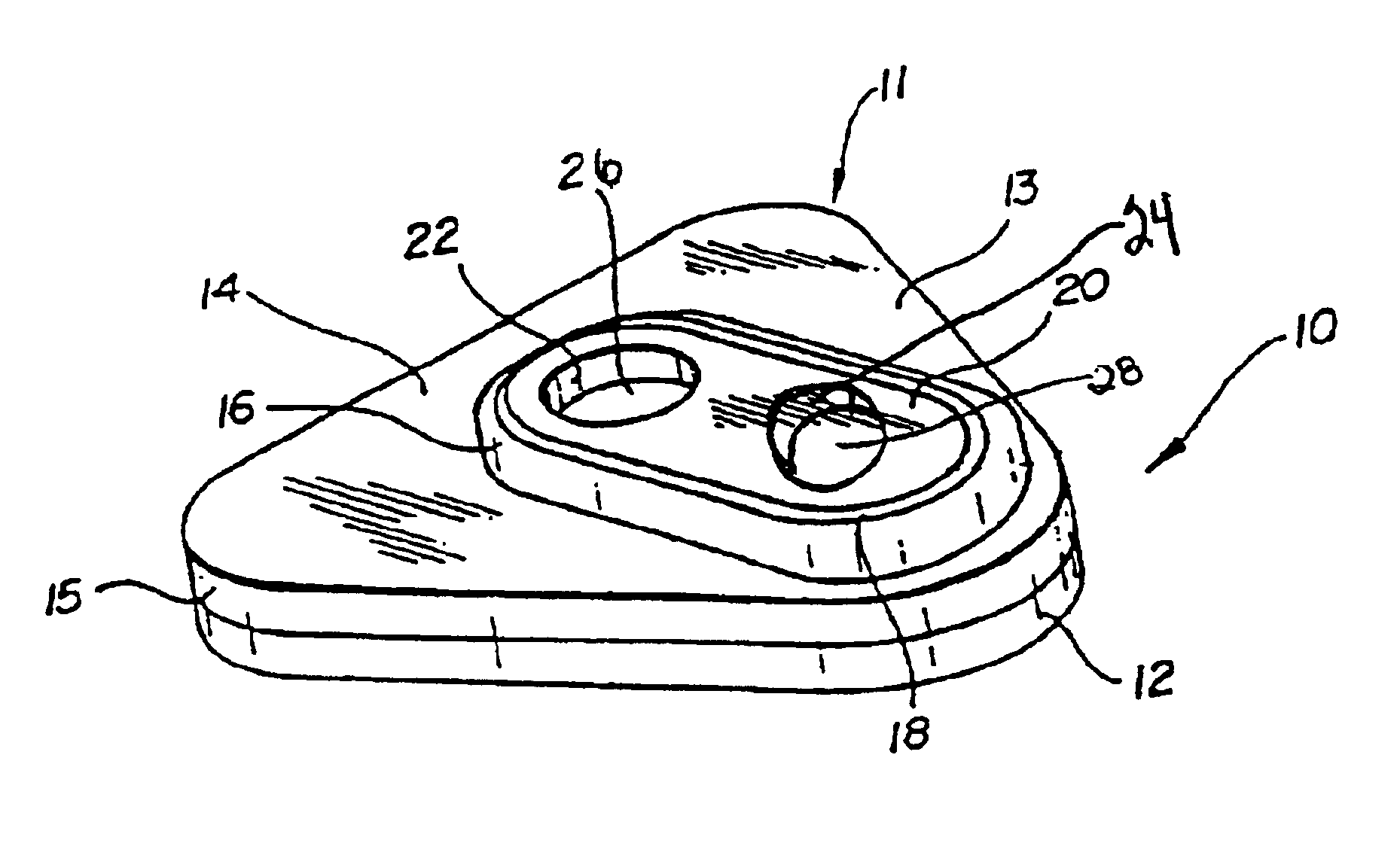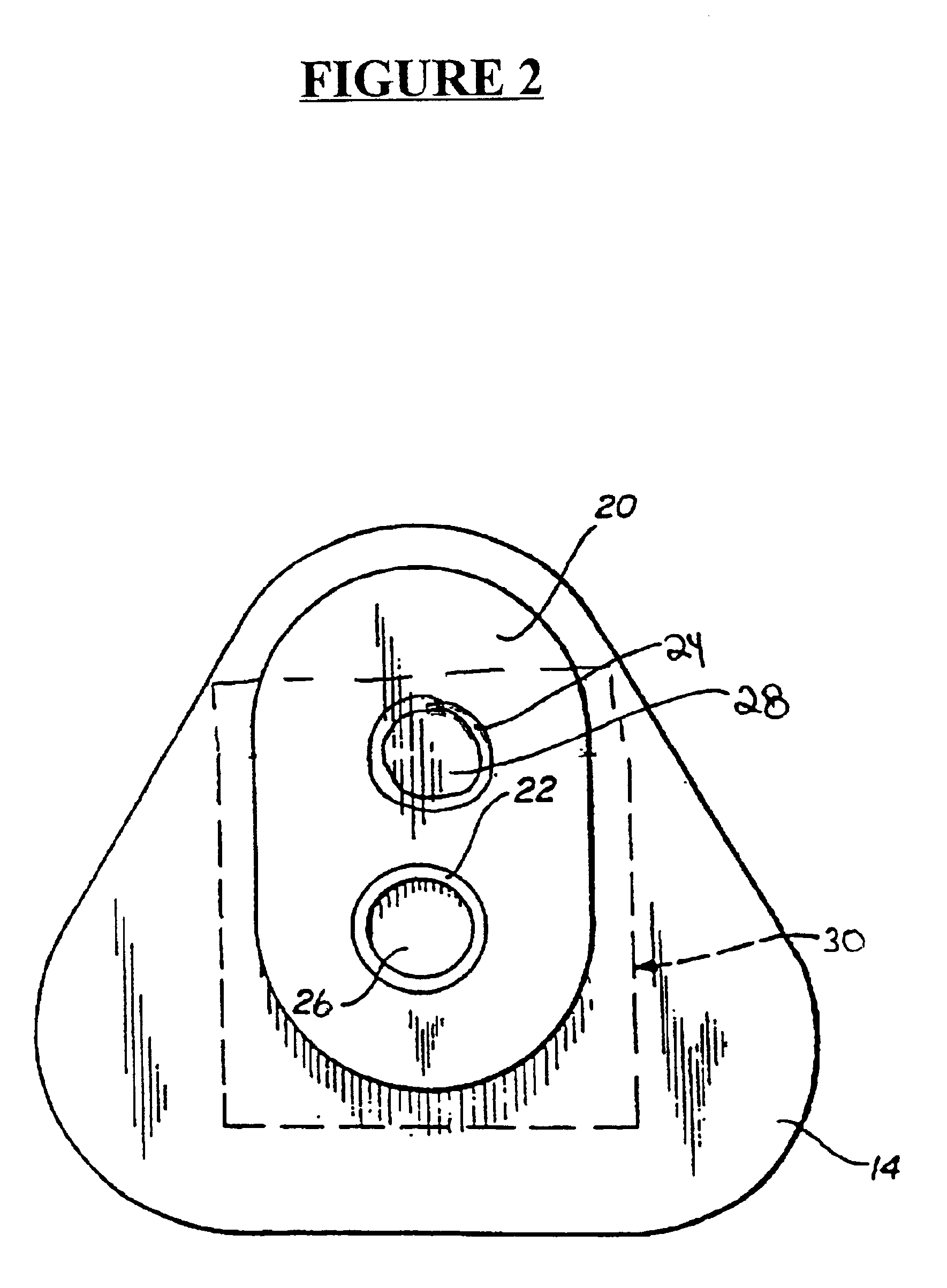Detection of multiple analytes from a single sample using a multi-well, multi-analyte flow-through diagnostic test device
a multi-analyte flow-through and diagnostic test technology, applied in biomass after-treatment, instruments, analysis using chemical indicators, etc., can solve the problems of device and method of henderson et al. not readily adaptable to the detection of more than one antigen, same drawbacks, etc., and achieve the same drawbacks as other prior art devices and methods
- Summary
- Abstract
- Description
- Claims
- Application Information
AI Technical Summary
Benefits of technology
Problems solved by technology
Method used
Image
Examples
examples
Analytical Studies
Analytical Sensitivity
[0070]The analytical sensitivity was evaluated using 13 influenza strains (7 Influenza A strains and 6 Influenza B strains). Serial dilutions prepared using qualified media were tested in triplicate according to the above-described method of the present invention. Viral detection limits were calculated by logistic regression analysis based on viral concentrations and interpretation on test results.
[0071]
Influenza Viral StrainViral TypeDetection Limit (CEID50 / mL)A / PR / 8 / 34 (H1N1)A8.2 × 103A1 / FM / 1 / 47 (H1N1)A5.9 × 102A / NWS / 33 (H1N1)A1.6 × 102A1 / Denver / 1 / 57 (H1N1)A6.5 × 101A / Port Chalmers / 1 / 73 (H3N2)A2.9 × 102A / Victoria / 3 / 73 (H3N2)A3.3 × 104A / New Jersey / 8 / 76 (H1N1)A2.1 × 102B / Lee / 40B1.2 × 106B / Allen / 45B1.8 × 102B / Maryland / 1 / 59B4.6 × 101B / GL / 1739 / 54B2.5 × 103B / Taiwan / 2 / 62B6.6 × 102B / Hong Kong / 5 / 72B2.3 × 103
Analytical Specificity and Cross-reactivity
[0072]The test device of the present invention was evaluated using 90 microorganisms (58 bacteria, 2 y...
PUM
| Property | Measurement | Unit |
|---|---|---|
| temperature | aaaaa | aaaaa |
| concentration | aaaaa | aaaaa |
| fluorescence | aaaaa | aaaaa |
Abstract
Description
Claims
Application Information
 Login to View More
Login to View More - R&D
- Intellectual Property
- Life Sciences
- Materials
- Tech Scout
- Unparalleled Data Quality
- Higher Quality Content
- 60% Fewer Hallucinations
Browse by: Latest US Patents, China's latest patents, Technical Efficacy Thesaurus, Application Domain, Technology Topic, Popular Technical Reports.
© 2025 PatSnap. All rights reserved.Legal|Privacy policy|Modern Slavery Act Transparency Statement|Sitemap|About US| Contact US: help@patsnap.com



